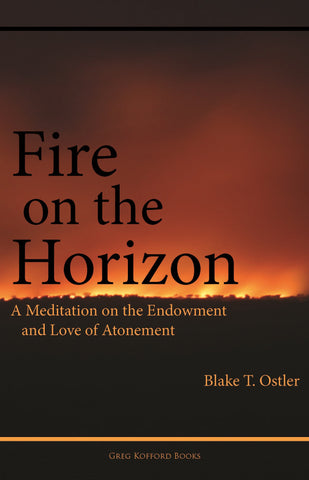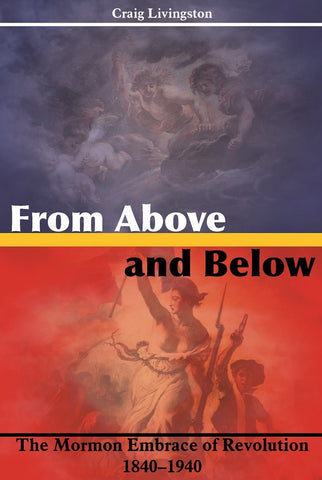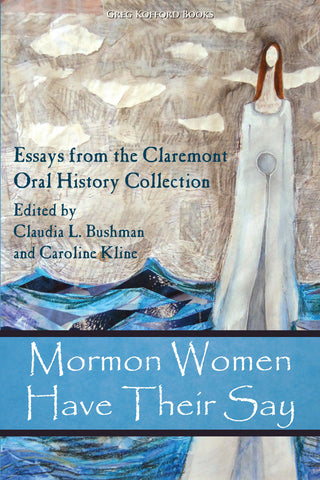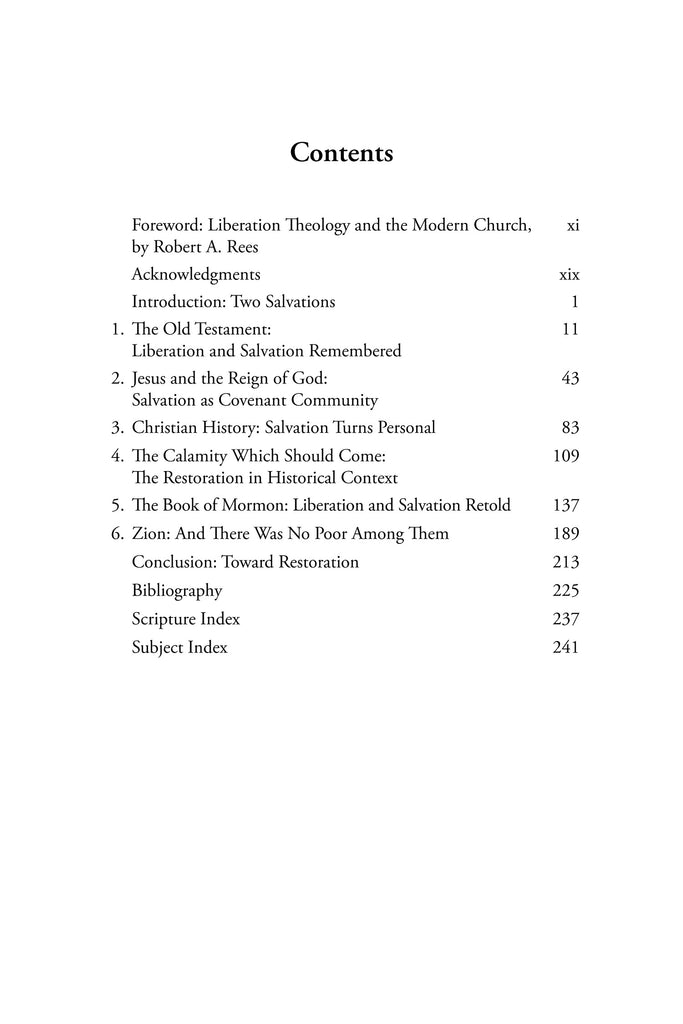And There Was No Poor Among Them: Liberation, Salvation, and the Meaning of the Restoration
$26.95
by Ryan D. Ward
Now available.
- “This a profound and profoundly important book, one of the most compelling in the history of modern Mormonism. . . . If I had the power, I would make And There Was No Poor Among Them required reading of every local, regional, and general leader of the Church.” — Robert A. Rees
- “Innovative, forceful, and thoughtful. . . . This book reveals that the richness of the gospel lies not merely in piling up treasures in heaven, but in working with God to liberate the world.” — Margaret Olsen Hemming
-
“Persuasively argues that the Latter-day Restoration is also a call to return us to the societal salvation exemplified in the Hebrew Bible and Christ's ministry. . . . This is an invaluable resource for improving and directing our Christian ministry in the world today.” — David B. Ostler
- “A prophetic reframing of salvation, atonement, and apostasy, making the teachings of Joseph Smith’s Restoration ring with power and relevance amid the calamities of our current age.” — Melissa Inouye
- “In And There Was No Poor Among Them, prophetic imagination is integrated and redefined with insights that explicate the meaning of building the kingdom of God on earth, here and now. . . . This is a great book.” — Warner Woodworth
- “Brings new light to Restoration scripture that we as a people should ponder deeply and work to extend, challenge, and improve..” — Conor Hilton



Available in ebook for Kindle, Apple, Google Play, and, Kobo.
Also available through Amazon and Benchmark Books.
Download a free sample preview.
Book Description:
While The Church of Jesus Christ of Latter-day Saints has expanded many fundamental Christian doctrines, salvation is still understood as pertaining exclusively to the next life. How should we understand salvation and what does the timing of the Restoration reveal about God’s vision of salvation for a suffering world?
To answer these questions, author Ryan Ward traces the theological evolution of salvation from the liberation of Israel from oppression to the Western Christian development of salvation as an individualistic, transactional atonement. This evolution corresponded with the shift of Christianity from a covenant community to an official state religion aligned with imperial power structures. Ward also explores the economic and social movements in the centuries leading up to the Industrial Revolution, which solidified the power of propertied elites at the expense of the poor, plundered entire continents, and killed millions.
Synthesizing these theological and historical threads, And There Was No Poor Among Them: Liberation, Salvation, and the Meaning of the Restoration asserts that the Restoration is God's explicit rejection of social and economic systems and ideologies that have led to the globalization of misery. Instead, Ward shows how the Restoration and the gospel of Christ is an invitation to a participatory salvation realized in Zion communities where “there are no poor among us.”
Comprehensive Table of Contents:
.
Foreword: Liberation Theology and the Modern Church, by Robert A. Rees
I: Salvation Restored
II: A Community of Revelation
III: A Secular Witness
IV: The Call to the Church and to Individual Latter-day Saints
V: Jesus’s Last Great Message
Introduction: Two Salvations
1. The Old Testament: Liberation and Salvation Remembered
The Exodus
Establishing Community
Solemnizing and Safeguarding
Prophets and a New Reality
Idolatry and Oppression
Kings and Kingdoms
Pleas of the Victims
Divine Response
Salvation History and Hope
2. Jesus and the Reign of God: Salvation as Covenant Community
Uncovering the Historical Jesus
The Social, Political, and Religious World of the Gospels
The Temptations
The Miracles
The Parables
The Cross and the Empty Tomb
The Crucified People of the World
3. Christian History: Salvation Turns Personal
Paul and Justification
Augustine and the Guilty Conscience
Purgatory, Indulgences, and Individual Penance
Atonement Mechanism and Metaphor
Luther and the Triumph of Individual Salvation
Paul Revisited
4. The Calamity Which Should Come: The Restoration in Historical Context
Serfs and Peasants
Primitive Accumulation
Enclosure and the Commons
Property and the Criminalization of the Poor
Conquest and Colonialism
A Creation Groaning
5. The Book of Mormon: Liberation and Salvation Retold
Initial Acts of Deliverance
A Great and Terrible Gulf Divideth Them
Remember the Captivity of Your Fathers
Are We Not All Beggars?
Pride, Wealth, and Boundary Markers
If This Be the Desire of Your Hearts
An Infinite and Eternal Reconciliation
6. Zion: And There Was No Poor Among Them
There I Will Give Unto You My Law
If You Are Not Equal in Earthly Things
I Am Now Willing to Give All I Have to the Lord
Consecration, Emptying, and Atonement
Conclusion: Toward Restoration
Q&A with the Author:
.
For those who have never heard of liberation theology, how would you define it?
Liberation theology, in brief, is a branch of Christian theology that considers the liberation of the oppressed. It deals specifically with how the good news of the gospel can be realized in situations of oppression, poverty, and marginalization. As such, in liberation theology, God’s dealings with humanity and Jesus’s life and ministry are viewed through the lens of the hope of the oppressed for liberation, and liberation theologians view God’s work in the world as being preferentially relevant to liberating the poor. This theology has been worked out in real-world situations of political oppression. It began in Latin America during the 60s and 70s as a response to the brutal dictatorships of this period and has been adapted to many other contexts of oppression.
How were you first introduced to liberation theology, and is there anything in particular that sparked your interest in it?
Several years ago I felt impressed to study Jesus’s Atonement. I read everything I could find about it both within Latter-day Saint scholarship and broader Christian perspectives. This study eventually led me to reading extensively about the life and ministry of Jesus in its historical context. One of the books I read referenced Gustavo Gutierrez, who many consider the father of liberation theology, and I read his book A Theology of Liberation. It absolutely blew my mind, and I read dozens of liberation theology books over the next couple years. For me, it felt like much of what I had been struggling to understand suddenly made sense, and liberation theology has given me a powerful new lens through which to view my faith and discipleship. So I didn’t seek it out, I guess you could say it found me. I would also say I think I was led to it.
In Chapter 3 you explore how during the period between (what Latter-day Saints generally refer to as) the Great Apostasy and the Restoration, the general Christian understanding of salvation transformed from a primarily social and communal effort into something almost entirely concerned with individuals and the afterlife. What are some key aspects of the Restoration that you see as returning Saints to a more communal understanding of salvation that focuses on the here and now?
I think the baptismal covenant in Mosiah 18:8-10 indicates that there is something very fundamental about this mortal human existence. The covenant to mourn, bear burdens, and offer comfort focuses discipleship on entering into a community of shared suffering with one another. For me, the fact that this is the first covenant we make as Latter-day Saints is a powerful witness that God’s purposes for this life have much more to do than proving our worth to return to live with God. Second, the idea of sealing the entire human family together via temple ordinances provides a beautiful symbol of the kind of community we should be striving to establish here on earth. Third, the idea of Zion as the ideal toward which we strive is that of a covenant community set apart by virtue of its economic and spiritual structure. The defining feature of Zion is that the people are of one heart and one mind and that there is no poor among them. This is not a description of the afterlife, it is a temporal, mortal reality. Finally, there is doctrinal support for the idea that this earth will become the Celestial Kingdom. What has not been worked out is how that is to happen. I suggest that reference to different degrees of glory indicates different degrees of living in covenant relationship with one another. The highest degree of such relationship is a Zion existence. Eternal life is defined officially by the Church as “the quality of life that our Eternal Father lives.” There is nothing in this definition that locates this type of existence exclusively, or even primarily, in the afterlife.
Why might some Latter-day Saints be hesitant to consider or embrace this understanding of salvation? What would you say to them to alleviate that hesitation?
The main reason is that the concept of salvation as pertaining strictly to the afterlife is deeply ingrained in our Christian tradition. Another reason is that our religious tradition claims exclusive authority to administer what we term the “ordinances of salvation” in temples. They are believed to be prerequisites that enable progression in the next life. Our kindred dead are waiting for these and cannot progress without them. These ideas make it very difficult to consider salvation as pertaining to the here and now. There is, however, a lot of scriptural evidence, in the Bible as well as within Restoration scripture, that salvation pertains to this life as well. I hope my book presents some of this evidence in a way that allows people to feel comfortable with beginning to expand their view of salvation to also include lifting the poor, oppressed, and marginalized in this life. In fact, a main argument in the book is that we have a covenant obligation to do so. I think that if we truly view others as sisters and brothers and fellow children of God, we cannot help but reach out to those around us who are less fortunate. For me, turning outward is a manifestation of an inward conversion to the gospel of Jesus Christ.
What other aspects of liberation theology would you like to see explored through a Restoration lens?
I think this is really exciting and there are so many possibilities. I’ll briefly mention two. Paul’s metaphor of the saints as the “body of Christ” is one that has not been extensively explored within the context of Restoration thought. I think it provides a profound area of potential exploration. How are we the body of Christ? What does that mean in terms of our individual and collective action to alleviate suffering in the world? How is the mission and mandate of the Church related to the way it acts as the body of Christ in the world? Relatedly, what do our ordinances and covenants, particularly the law of consecration as received in the temple endowment, teach us about our covenant obligations to humanity? How can these ordinances and covenants bind us to one another and to God, and how can this give us access to power needed to manifest God’s salvation to the world? These questions are only the beginning of an exploration of liberation theology through a Restoration lens. I think our unique tradition can make some significant contributions to liberation theology, and I hope that Latter-day Saints embrace this way of thinking more expansively about our faith.
Praise for And There Was No Poor Among Them:
“This a profound and profoundly important book, one of the most compelling in the history of modern Mormonism. In the spirit of ancient prophecy, modern revelation, and liberation theology, it is a call to repentance—for those of us who consider ourselves the children of God—to fulfill our covenantal promise to minister to the poor, the sick, the oppressed, and all those others with whom Jesus identifies himself as 'the least' among us.
“Ward reminds us that true salvation is both temporal and spiritual, that it takes place both in this world and in the next, and that the call to establish Zion is both today and every day until there are no poor, oppressed, or dispossessed among us.
“If I had the power, I would make And There Was No Poor Among Them required reading of every local, regional, and general leader of the Church—and make it the text for next year's Come Follow Me course of study! I am serious when I say I consider this the most important book Kofford Books has ever published.” — Robert A. Rees, co-founder and vice-president of the Bountiful Children's Foundation
“This is an innovative, forceful, and thoughtful text. By drawing on truths offered by the faithful around the world, Ryan Ward points toward a robust Restoration—one that will inspire readers to follow God's commandment to stand in solidarity with those on the margins. This book reveals that the richness of the gospel lies not merely in piling up treasures in heaven, but in working with God to liberate the world.” — Margaret Olsen Hemming, co-author of The Book of Mormon For the Least of These
“And There Was No Poor Among Them stands as an important reminder that God's salvation is not only an individual or familial effort, nor is it just concerned with our spiritual state in the afterlife. Instead, Ryan Ward persuasively argues that the Latter-day Restoration is also a call to return us to the societal salvation exemplified in the Hebrew Bible and Christ's ministry that prioritizes lifting the poor, marginalized, and oppressed, and establishing the Kingdom of God in the here and now. This is an invaluable resource for improving and directing our Christian ministry in the world today.” — David B. Ostler, author of Bridges: Ministering to Those Who Question
“A prophetic reframing of salvation, atonement, and apostasy, making the teachings of Joseph Smith’s Restoration ring with power and relevance amid the calamities of our current age.” — Melissa Inouye, author of Crossings: a bald American Latter-day Saint woman scholar’s ventures through life, death, cancer, and motherhood (not necessarily in that order)
“Insightful and a needed contribution to the world of Mormon theology. . . I hope that many of my fellow co-religionists read And There Was No Poor Among Them: Liberation, Salvation, and the Meaning of the Restoration and begin to wrestle with the ideas that Ward brings to the table. The book brings new light to Restoration scripture that we as a people should ponder deeply and work to extend, challenge, and improve. And perhaps most importantly, I hope that Ward’s book inspires me and my fellow Saints to work more fully to restore a community where 'there was no poor among them.'” — Conor Hilton, Association for Mormon Letters
“For more than half a century, liberation theologians have raised difficult questions for comfortable Christians. In this book, Ryan Ward asks another difficult question: What if the Restoration was a divinely offered response to the very injustices that have spurred liberation theology? It's a good question, and Ward gives some provocative answers to it.” — Joseph M. Spencer, author of For Zion: A Mormon Theology of Hope
“In And There Was No Poor Among Them, prophetic imagination is integrated and redefined with insights that explicate the meaning of building the kingdom of God on earth, here and now. The chapters are rich with practical and theological concepts, utilizing and providing examples from the marginalized of history, theology, and religious scholarship, as well as priests and radicals from across the fields of practical religions. In doing so, author Ryan Ward suggests actions that need to be better understood and become more fully aligned with the Latter-day Restoration of the gospel. This is a great book.” — Warner Woodworth, NGO founder and author of Radiant Mormonism: Using Our Faith in Christ to Power World-changing Service
About the Author:
 Ryan D. Ward received his PhD from Utah State University specializing in experimental psychology. Following postdoctoral work in the Departments of Psychiatry and Neuroscience at Columbia University in New York City, he accepted a position at the University of Otago, where he is a Senior Lecturer in the Department of Psychology. His research focuses on the neural basis of learning, animal models of psychiatric disease, and motivations for drug use. He teaches courses on drugs, behavior, addiction, and policy, and research methods. He lives with his wife and five children in New Zealand.
Ryan D. Ward received his PhD from Utah State University specializing in experimental psychology. Following postdoctoral work in the Departments of Psychiatry and Neuroscience at Columbia University in New York City, he accepted a position at the University of Otago, where he is a Senior Lecturer in the Department of Psychology. His research focuses on the neural basis of learning, animal models of psychiatric disease, and motivations for drug use. He teaches courses on drugs, behavior, addiction, and policy, and research methods. He lives with his wife and five children in New Zealand.More Information:
265 pages
ISBN 978-1-58958-787-8 (paperback)
Press Release









Share this item: